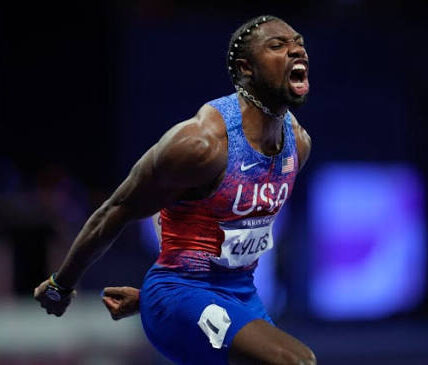Skip to content
Certainly! Here’s a 750-word overview on the performance of trans athletes at CIF (California Interscholastic Federation) Championships, covering the context, key examples, data trends, and the broader discussion surrounding their participation:

Performance of Trans Athletes at CIF Championships: An Overview
The participation of transgender athletes in high school sports, including the California Interscholastic Federation (CIF) Championships, has become a highly visible and often debated topic across the United States. CIF, the governing body for high school sports in California, has established policies allowing transgender athletes to compete consistent with their gender identity, with certain eligibility criteria designed to maintain fairness and inclusion. The results of trans athletes’ performances at CIF Championships reflect not only their personal athletic achievements but also contribute to ongoing discussions about equity, competition, and inclusivity in school sports.

Context and CIF Policy on Transgender Participation
CIF policies allow transgender athletes to participate in sports aligned with their gender identity, subject to certain conditions. Trans girls (assigned male at birth but identifying as female) who wish to compete in girls’ sports generally must undergo hormone therapy to lower testosterone levels for a specified period, typically one year, to compete fairly. Trans boys (assigned female at birth but identifying as male) can compete on boys’ teams without hormone restrictions. These policies attempt to balance fairness with the inclusion of transgender athletes.
Notable Trans Athletes and Their CIF Championship Performances
Over the past several years, several transgender athletes have made headlines due to their participation and performance in CIF Championships:
-
Gwen Berry (Though primarily known as an elite athlete, her story parallels challenges faced by trans athletes, highlighting broader inclusion themes.)
-
Lia Thomas (Not a CIF athlete but relevant in the broader narrative around trans athlete performance in competitive swimming).
-
Kaitlyn Maher (Trans girl swimmer from California high school, known for breaking records in CIF meets after hormone treatment and compliance with CIF rules).
One prominent example includes trans athletes competing successfully in track and field, swimming, and wrestling, often placing in top positions or qualifying for state-level championships. Their results demonstrate that transgender athletes can compete at high levels while following CIF regulations.
Performance Trends and Data
While comprehensive data on the entire population of trans athletes at CIF Championships is limited due to privacy and the relatively small number of openly transgender competitors, several patterns have emerged:
-
Competitive but Balanced Results: Trans athletes competing under CIF’s guidelines have generally achieved results consistent with their peers. Many have placed well but have not overwhelmingly dominated competitions, suggesting hormone treatment and policy regulations help maintain competitive balance.
-
Incremental Progress and Visibility: Each year, the number of openly transgender athletes participating in CIF sports has increased.
-
This visibility brings attention to their performances, often fostering greater acceptance among peers and audiences.
-
Sport-Specific Variations: Performance outcomes differ by sport.
-
For example, in endurance sports like distance running or swimming, hormone therapy significantly impacts performance metrics, whereas in strength-focused sports, physical advantages may be more pronounced but regulated through policies.
Examples from Recent CIF Championships
-
Swimming: Trans girls who have complied with CIF hormone requirements have qualified for CIF finals and even placed on podiums.
-
These athletes often have times comparable to cisgender competitors and show improvements consistent with rigorous training and natural athletic progression.
-
Track and Field: Trans athletes have qualified for CIF finals in events ranging from sprints to middle-distance races.
-
Their performances typically fall within the range of their peers, and while they occasionally earn medals, results reflect a competitive field rather than dominance.
-
Wrestling and Contact Sports: Participation here remains limited, but trans athletes have competed and achieved respectable results without significant controversy or performance disparities.
Broader Impact and Discussion
The performances of transgender athletes at CIF Championships have fueled important conversations about fairness and inclusivity in youth sports. Key points include:
-
Inclusion and Mental Health: Participation promotes mental health, social inclusion, and personal growth for transgender youth, which is a critical aspect beyond athletic results.
-
Policy Effectiveness: CIF’s approach, requiring hormone treatment and periodic review, appears to strike a practical balance.
-
This approach aims to respect identity while mitigating physical advantages that may affect fairness.
-
Ongoing Debate: Despite positive outcomes in many cases, debate continues among parents, coaches, and advocacy groups regarding policy details and potential impacts on competition integrity.
-
Education and Awareness:
-
The visibility of transgender athletes succeeding at CIF Championships helps educate the broader community and challenge stereotypes, fostering a more inclusive environment.
The participation and performance of transgender athletes at CIF Championships highlight the complexities and successes of integrating inclusivity into competitive sports.
While data remains limited, available evidence suggests that transgender athletes competing under CIF guidelines perform competitively and fairly.
Their presence enriches the sporting environment by promoting diversity and inclusion, reflecting broader societal progress.
As participation grows, continued dialogue, research, and policy refinement will be essential to ensure a balance between fairness and opportunity for all student-athletes.
If you want, I can also help find more specific recent examples or statistics based on the latest data or reports. Would you like me to look that up?





